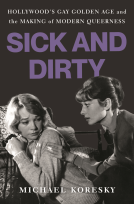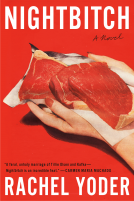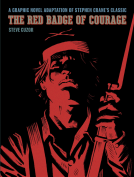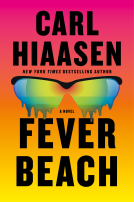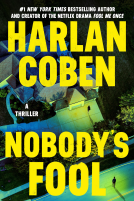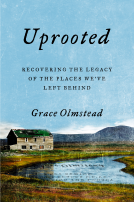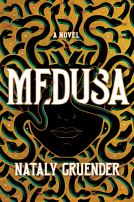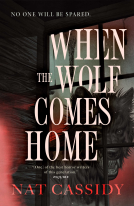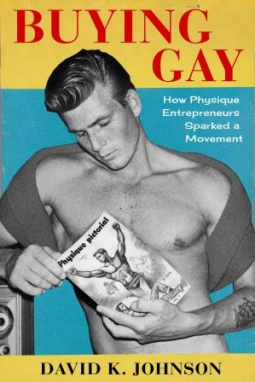
Buying Gay
How Physique Entrepreneurs Sparked a Movement
by David K. Johnson
This title was previously available on NetGalley and is now archived.
Send NetGalley books directly to your Kindle or Kindle app
1
To read on a Kindle or Kindle app, please add kindle@netgalley.com as an approved email address to receive files in your Amazon account. Click here for step-by-step instructions.
2
Also find your Kindle email address within your Amazon account, and enter it here.
Pub Date Mar 12 2019 | Archive Date Jul 16 2019
Talking about this book? Use #BuyingGay #NetGalley. More hashtag tips!
Description
Offering a vivid look into the lives of physique entrepreneurs and their customers, and presenting a wealth of illustrations, Buying Gay explores the connections—and tensions—between the market and the movement. With circulation rates many times higher than the openly political “homophile” magazines, physique magazines were the largest gay media outlets of their time. This network of producers and consumers helped foster a gay community and upend censorship laws, paving the way for open expression. Physique entrepreneurs were at the center of legal struggles, especially against the U.S. Post Office, including the court victory that allowed full-frontal male nudity and open homoeroticism. Buying Gay reconceives the history of the gay rights movement and shows how consumer culture helped create community and a site for resistance.
Advance Praise
"This deeply researched book expands our understanding of pre-Stonewall gay male activism by describing a bold group of physique photographers, magazine publishers, and booksellers who were more militant than the Mattachine Society and built a far larger constituency through their explicit portrayal and defense of homoerotic desire. A revelatory and compelling history."
—George Chauncey, author of Gay New York
"What do 1950s muscle magazines, gay booksellers, and pen-pal networks have to do with the LGBTQ movement? A great deal more than you might think. In this compelling book, David Johnson unearths stories of shrewd businessmen and hungry consumers who, through asserting their right to sell and buy and read what the law tried to ban, challenged repression, fostered gay community, and helped to build a movement."
—Leila J. Rupp, author of A Desired Past: A Short History of Same-Sex Love in America
"David K. Johnson’s Buying Gay is a groundbreaking work that reshapes how we think about queer history and its political movements. Johnson explores the barely underground world of pre-Stonewall publishing that shaped LGBT life, politics, and promotion of a gay identity. Johnson’s lucid writing and enthralling story startlingly remaps and complicates movement history, suggesting that an army of consumers cannot lose."
—Michael Bronski, author of A Queer History of the United States
Available Editions
| EDITION | Other Format |
| ISBN | 9780231189101 |
| PRICE | $34.00 (USD) |
Featured Reviews
 Travis P, Reviewer
Travis P, Reviewer
This book grabbed my attention due to the fact that I am gay and I like to read about gay history. That being said, I do not like my books to feel like I’m reading a history book and for some reason I got that from this. There were times where it kept my attention but there were more times of me seeming to be a bit bored than interested.
 Peter W, Media/Journalist
Peter W, Media/Journalist
Meticulously researched and well presented, this book nevertheless appeals to a very niche audience. My biggest complaint is that there weren’t nearly enough illustrations for such a visual topic, and a number that were included were not that illuminative..
During the 1950s and 60s, magazines focusing on the male form exploded across the United States, and yet their academic value has mostly been ignored. These magazines, created largely by and for gay men created a “gay market” which ultimately crafted the bones for the broader gay movement. Fortunately and finally, historian David K. Johnson has thrown back the curtain on this period which he has dubbed the Physique Era of gay American history.
For many, on first examining these publications, it might be easy to dismiss them. Most contain images of “beefcakes” somewhat awkwardly, somewhat suggestively posing in revealing straps. And yet, Johnson successfully captures their formation as the genesis to a broader movement. Bob Mizer might have been pushing the bounds for male art photography for commercial purposes when he founded the Athletic Model Guild, but there’s a compelling argument that he laid the groundwork for a broader social movement in the process.
Johnson’s research, pulling from a wealth of archives and personal interviews, is beautifully constructed. He approaches this obviously as a scholar, but understands how to pull back and keep everything accessible to a broader audience. The result is a text that’s both academic and breezy.
This is even more remarkable as Johnson explores beyond Mizer’s beginnings. Plenty of other magazines were publishing at this time, and they receive attention. Then there’s the Adonis Male Club, a pen pal service; Lynn Womack’s gay book club; and the business directories of Directory Services, Inc. What connects all of these institutions aside from the gay factor is the adversity they faced from the American government. These sections, discussing specific actions and court cases and the resulting uprising, are the most engrossing.
Buying Gay is nothing short of a triumph for gay scholarship.
 Bethany Y, Reviewer
Bethany Y, Reviewer
I really wanted to enjoy this but I found this quite dry to read. There was often very little to hold my interest and I kept putting this down and not picking up for ages. That was such a shame as I wanted to love this.
 Thomas W, Reviewer
Thomas W, Reviewer
In Buying Gay: How Physique Entrepreneurs Sparked a Movement, noted historian David K. Johnson (known for his research on the Lavender Scare), does a deep dive into the world of physique magazines and the strong connection between capitalism and activism in the fledgling gay rights movement.
Johnson shows the extent to which these magazines provided a site in which gay male desire could have free rein, an important psychic and collective space in a culture and society that relentlessly pathologized and policed gay desire. As a result, these magazines also played a pivotal role in the coalescing of a specifically gay male identity, one that was unequivocally centered on erotic desire. Those who bought these magazines–and who wrote to them–recognized that they were part of something greater than themselves.
As Johnson amply demonstrates, it’s a mistake to keep consumption and politics separated; instead, we should see them as two streams that constantly fed into and reinforced one another in the years preceding Stonewall. Indeed, the owners of these magazines were often at the forefront court cases that were to have a significant impact on the trajectory of gay rights and, indeed, the very legitimacy of gay identity. Several cases went right up to the Supreme Court, which surprisingly frequently decided matters in their favour. One of the great strengths of Johnson’s book is that he brings to light these oft-forgotten cases.
Johnson doesn’t unnecessarily valourize these men and women (because yes, there were women who owned physique magazines). They were often at odds with one another (hardly surprising, considering the large personalities involved), and they were not always allies with one another. Despite their differences, however, they all played a part. Collectively, they forged important sites of resistance that continue to have an effect on our culture today.
The book also makes it clear just how ubiquitous was the condemnation of homosexuality in Cold War America. It’s one of those things that you probably know on a subconscious level, but which you can’t really grasp in its enormity until you read about it from a historian’s perspective. From our standpoint, it seems so silly that so many people in government and in society at large would have such bigoted ideas about people who happen to love differently than they do, but it does explain why it is that there are still far too many Americans who would like nothing more than to chase queer people back into the closet. In the era that Johnson documents, the post office was determined to crack down on what it termed “obscenity,” a ridiculously flexible term that allowed them to subject numerous individuals to state persecution.
It’s important to point out, as Johnson does, that this was very frequently a white gay male community. While some magazines did feature men of color, it was far more common for the era’s segregationist ethos to permeate its magazines. It’s actually rather refreshing to see a writer of queer history acknowledge the implicit (and often explicit) racism that has long plagued the LGBT rights movement.
Those with little familiarity with Cold War history, or with queer history, will learn a great deal from Johnson’s book. Though he primarily focuses on physique magazines, he also demonstrates that there were a variety of other print venues in which gay men found expression. There were even book clubs devoted to distributing gay-oriented books to (surprisingly large) numbers of subscribers. If anyone has ever told you that there weren’t gay people when they were young, you can simply brandish the examples that Johnson documents to show them just how wrong they were. Gay people have always existed in America, and it is important to recognize the many ways in which their experience has taken shape.
Johnson’s work does justice to an all-too-often ignored aspect of gay life in Cold War America. Just as importantly, it shows us the ways in which the the actions of Stonewall in 1969 did not emerge from a vacuum. Instead, it was a logical outcome to a gay community that had slowly been taking shape in the years after the end of the World War II and that, in the wake of Stonewall, would finally come into its own.
 Librarian 379234
Librarian 379234
I was super excited to hear about this book--some of my own research is around physique magazines. Johnson argues that through the networks of physique magazines and other mailing lists that gay men were actually able to organize in ways predating what we traditionally think of as the gay rights movement. It's very compelling and it was interesting to see a deep dive into some of these publications and their creators. I think it's a must read for anyone interested in Queer Studies, Gay Rights or even publishing to be honest.
Buying Gay: How Physique Entrepreneurs Sparked A Movement
by David K. Johnson
2019
Columbia University Press
5.0 / 5.0
Gay entrepreneurs responded to and cultivated a gay market long before the Stonewall Riots in 1969. This amazing history chronicles the struggles with both the bodybuilding magazines, and the US Postal Service, who for years repressed and suppressed homosexuals, and it documents the important struggle between the US Federal Government and gays and lesbians into the 1950s, 1960s and 1970s, until Arnold Schwarzenegger.
It was only through these publications and gay book services that gay men had a way to connect to each other, or become friends. The magazines were sent discreetly and lists of subscribers were shared, and they found the lists keep growing. There was a need and market for these publications.
The history and struggles are excellent and thoroughly documented. The struggles with the US Postal Service, and the early formations of gay publications and book clubs were my favorite parts. I am grateful for these courageous men and women who fought for our rights, against incredible odds, so gay people could read and share their life stories and fiction books. And to be able to connect to one another, for support and friendship.
Special thanks to Columbia University and David K. Johnson for sharing this ARC for review.
#BuyingGay
#NetGalley
Although it i well researched, I had serious problems with the style. I was curious about how magazines had an impact in the gay movement, since I know nothing about the topic, but I was putting down this book so many times that there was no point in keep trying to read it.
As a thank you to Netgalley and the publisher for providing me with an advanced readers copy I shall give an honest review of “Buying Gay by David K. Johnson.” Buying gay tells how consumerism by gay men in the 1950’s assisted the gay rights movement in a pre-stonewall era. It examines the role physique publications had within the gay community and importantly the discourse that would be had over the visibility and rights of its Gay American citizens. These publications defined a generation of gay men who viewed its images, read its articles, and engaged with other readers providing what we consider as gay culture. These publications were gay-owned meaning they were produced by and for gay men. These publications held many roles for the men and women part of its early history. In creating this niche that predominant publications Playboy and Esquire offered heterosexual males these publications offered something to homosexual men in a discreet way adhering to the bylaws reinforced at the time. Buying Gay explores the many legal battles these publications went through in the name of artistic expression and censorship. Overall, I enjoyed learning an area in the gay rights movement that is often not discussed as much. It certainly holds a special place alongside the Stonewall riots and other momentous events that led to the creation of the Gay rights movement. I recommend this for those interested in history, and Gay rights.
